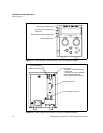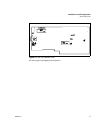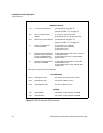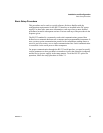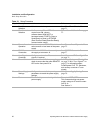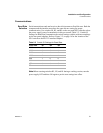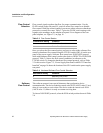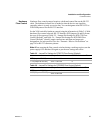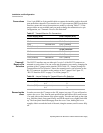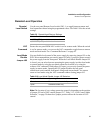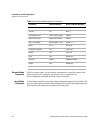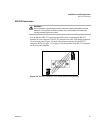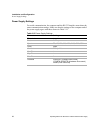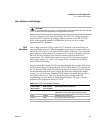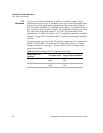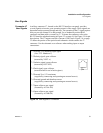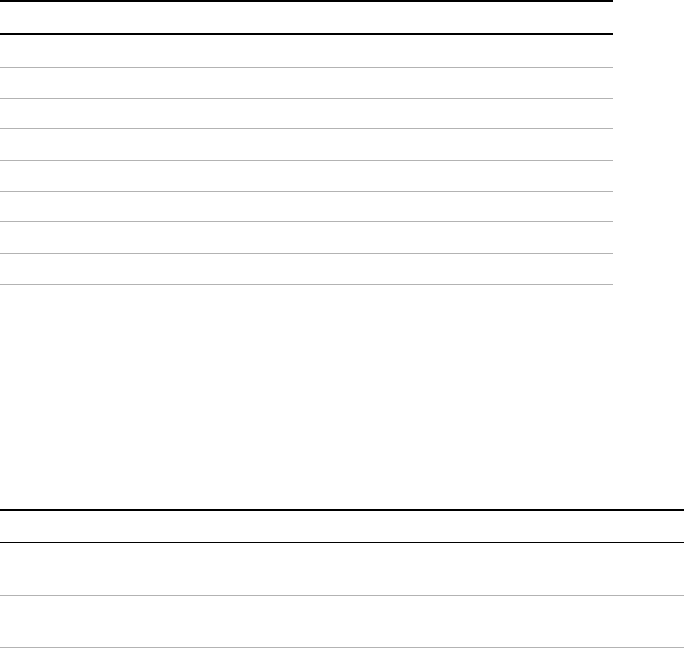
Installation and Configuration
Communications
24 Operating Manual for RS-232 for XT/HPD Series Power Supply
Connections Use a 9-pin (DB9) to 9-pin parallel cable to connect the interface card to the serial
port on the host computer. If you need to use a 25-pin connector (DB25) on the host
interface, ensure the correct connections are made by referring Table 2.7. If the
proper cables are not available and you need to change the transmit/receive pin
configuration, see “Transmit / Receive Pin Selection”.
Table 2.7 Transmit/Receive Pin Connections
Transmit /
Receive Pin
Selection
The RS-232 interface can use either pin 2 or pin 3 of the RS-232 connector to
transmit or receive data. You can set the pin orientation you want by changing the
position of the J7 jumper on the interface PCB. Table 2.8, “Jumper Settings for
Transmit/Receive Pin Selection” shows the transmit/receive pin selection on the
RS-232 connector in relation to the settings of the J7 jumper. See Figure 2.3,
“RS-232 Interface PCB” on page 17 to locate jumper J7.
Table 2.8 Jumper Settings for Transmit/Receive Pin Selection
Removing the
cover
In order to access the J7 jumper or the J95 jumper (see page 25) you will need to
remove the cover. First, turn the unit upside-down and remove the 6 small screws
(3 to each side) on the bottom of the power supply. Turn the unit back up the right
way. Hold the plastic front panel firmly and lift the metal cover slightly back and
up. The front panel should disengage from the cover. Now, holding the cover
straight, slide it towards the back of the unit, along the runners, until it comes fully
off.
Power Supply (DCE) Host Computer (DTE)
9-pin connector
Pin 2 transmits to Pin 2 (Receive)
Pin 3 receives from Pin 3 (Transmit)
Pin 5 (Ground) connects to Pin 5 (Ground)
25-pin connector
Pin 2 transmits to Pin 3 (Receive)
Pin 3 receives from Pin 2 (Transmit)
Pin 5 (Ground) connects to Pin 7 (Ground)
Jumper J7 Connections RS-232 Connector Pin
Transmit (TXD)
4-6 (default)
4-2
3
2
Receive (RXD)
3-1 (default)
3-5
2
3



